Aboveground Oil Tanks
Many houses built before the mid 1960s used heating oil which was stored in either an underground or aboveground tank. Aboveground storage tanks are often located in the crawlspace, basement, or against a wall of the house. In many cases, an aboveground tank was installed to replace a leaking underground storage tank.
Releases from aboveground oil tank leaks must be reported to the State and a Notice of Residual Petroleum must be filed if soil contamination cannot be removed. However:
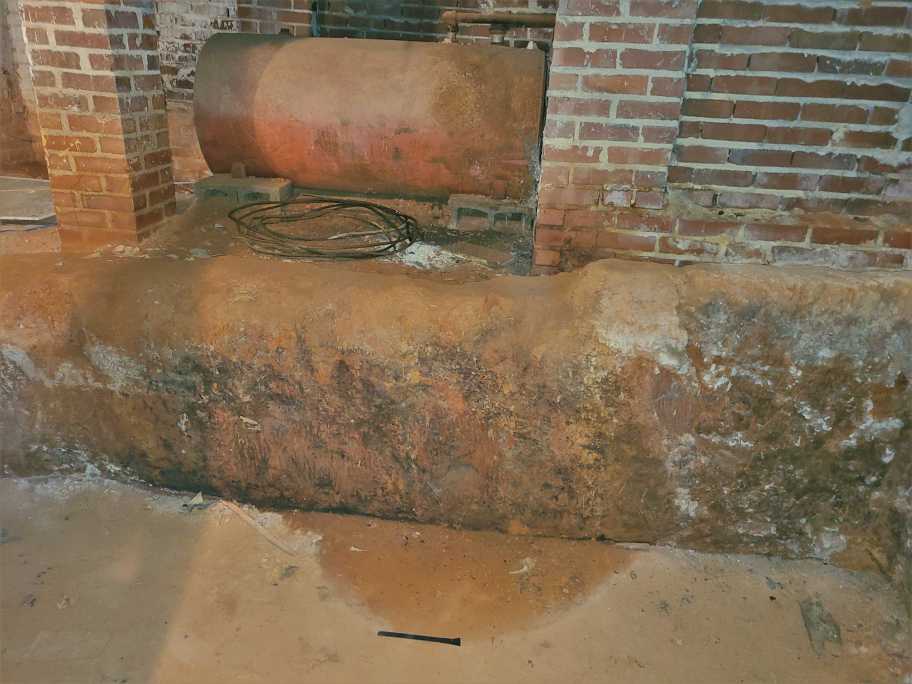
This aboveground tank in the basement was not leaking but there had been a slow leak from the fuel lines. Oil vapors entering a residential space are a high risk factor and cleanup will be required.
Leaking aboveground tanks are potentially a greater liability than a leaking underground tank.
- Regulations require excavation of contaminated soil and soil and groundwater sampling in most cases.
- Further environmental assessment work may be required.
- Leakage from aboveground tanks often causes soil contamination beneath residential structures, where limited access necessitates expensive hand excavation to remove the contaminated soil.
Case history of a leaking aboveground oil tank.
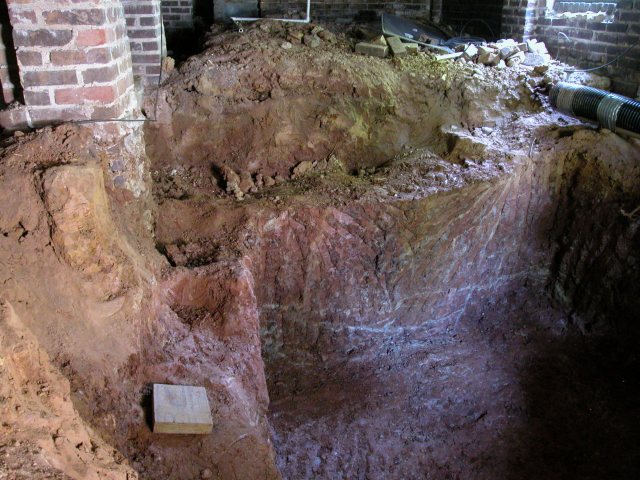
Soil excavation beneath a house is difficult and expensive, but may be required to remove health issues posed by vapor from the contaminated soil.
The photo below shows an excavation pit in the crawlspace of a house. When the current owner purchased the house, the aboveground tank was removed but he chose not to have the underlying soil inspected. Two years later the property was listed for sale, and a prospective buyer, upon learning of the former aboverground tank, did have the soil inspected. Significant soil contamination was discovered which had to be reported to the State and the contaminated soil had to be removed. Ignoring the possibility of soil contamination meant that the original buyer incurred significant expense to clean up the soil to acceptable standards! Don’t ignore the possibility of leaks from aboveground tanks!
Removing aboveground tanks.
Great care is required in removing aboveground tanks that still contain oil. Although they may not be leaking, there may be significant corrosion that is not immediately apparent. When the tank is moved, the corrosion may be dislodged and cause a sudden leak from the tank. This can quickly produce a significant environmental issue, and if the tank is located beneath a house it can cause health problems. The tank shown in the pictures below, contained more than 40 gallons of oil despite having several large corrosion holes. Cedar Rock offers experienced aboveground tank removal services that minimize the chance of leakage from the tank during removal. We recommend that you do not remove an aboveground tank that still contains oil by yourself or with inexperienced help.
Site inspections essential.
Aboveground tanks can cause serious environmental problems. Always schedule a site inspection of any property of interest that may have, or may have had, an aboveground heating oil tank. Cedar Rock will determine if an aboveground tank has leaked and advise you on possible courses of action. Cedar Rock is able to provide the services required to satisfy any regulatory requirements and help you obtain a "No Further Action" letter from the State. Call us at (336) 684-2734 or use our online contact form to schedule a site inspection now.

View of an aboveground tank in a basement in contact with soils. Leaking oil is pooling on the soil beneath the tank.
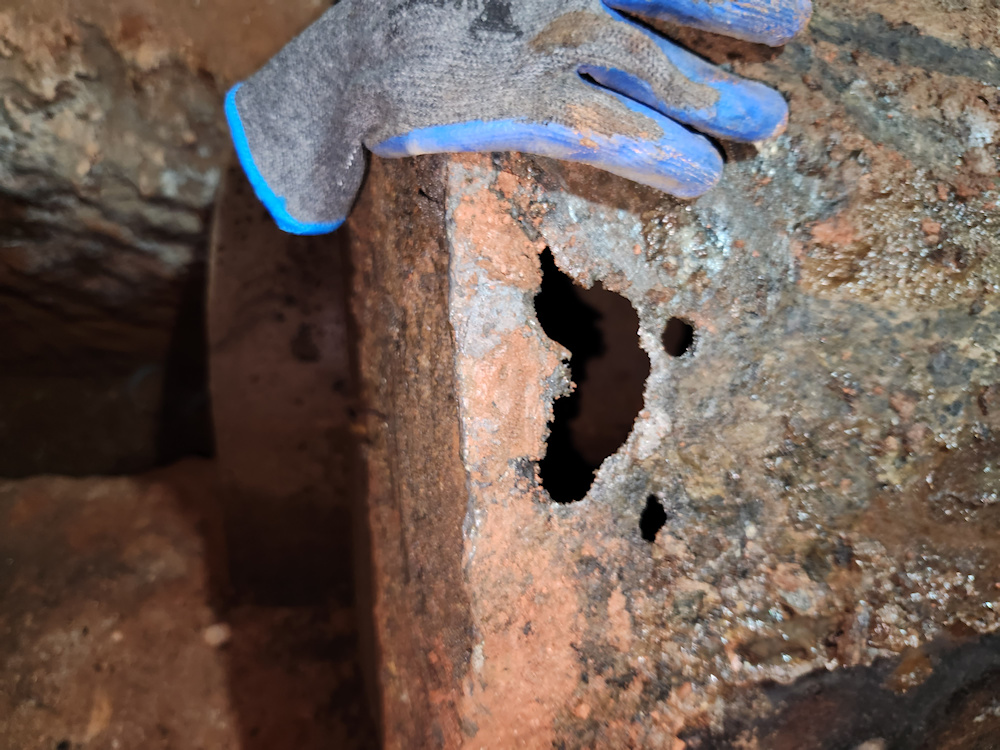
Corrosion holes photographed during removal of the tank. This tank still contained oil despite these holes!
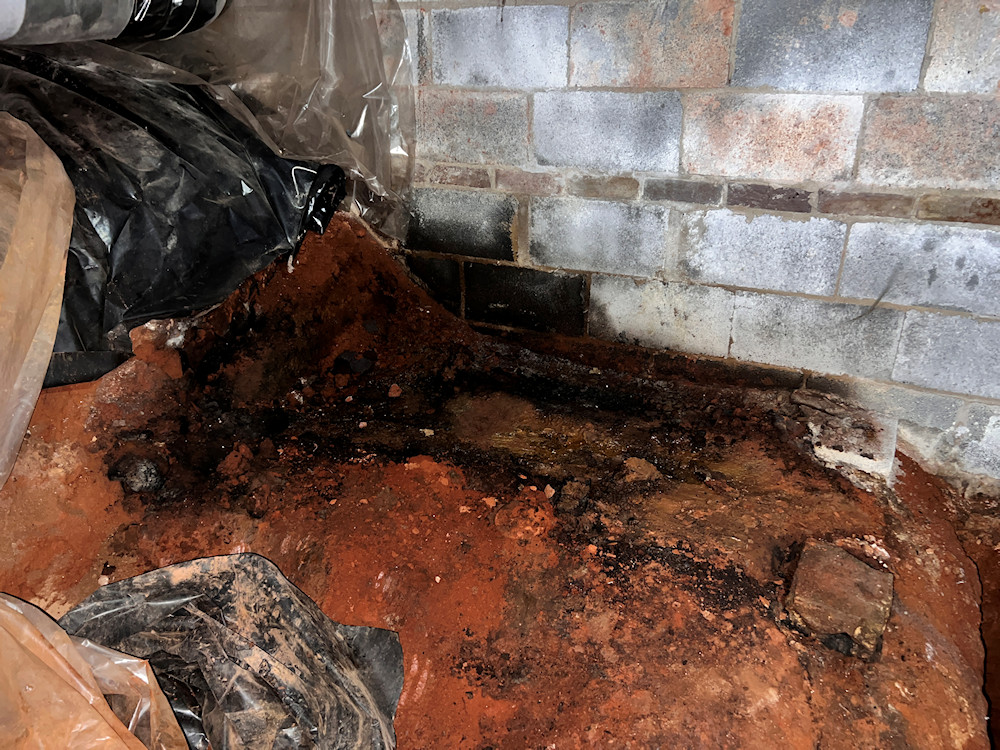
View of discolored contaminated soil beneath the former location of the aboveground tank.
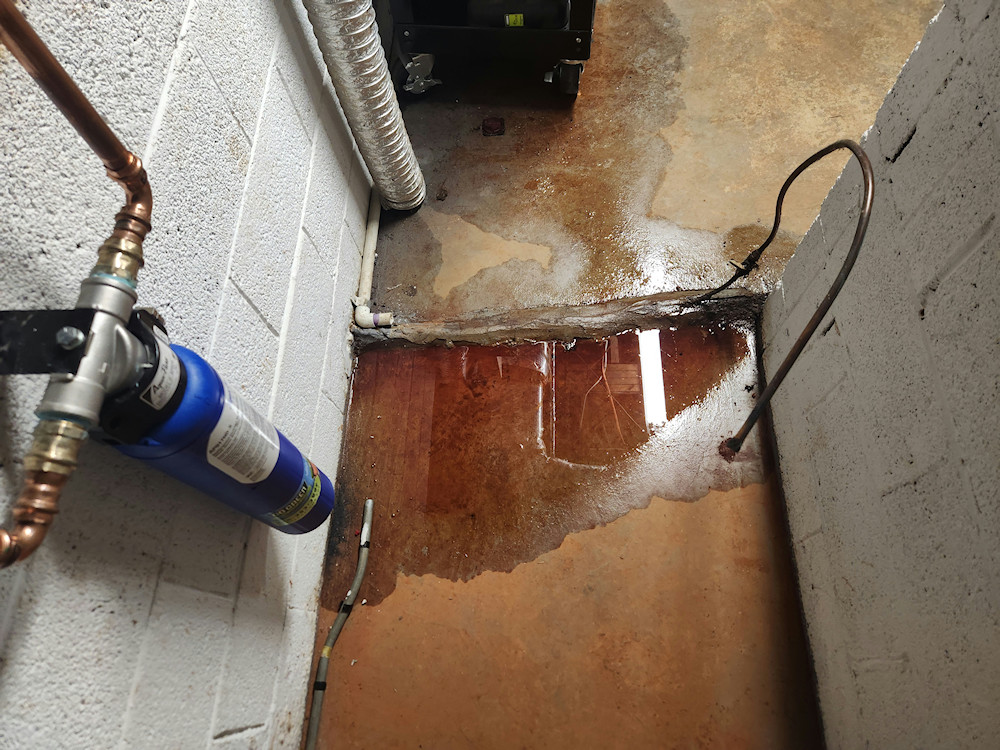
Oil was also leaking from the fuel line connected to the tank.

